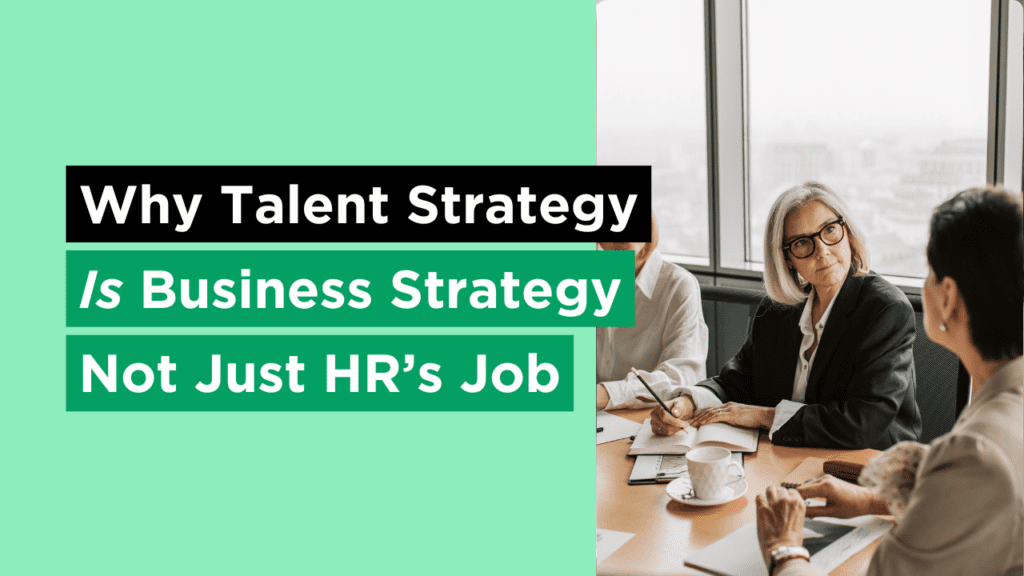Whenever a new start joins my company, one of the ways they’re introduced to our culture is through a group induction session. During this session, I tell the group of fresh-faced employees exactly how I got to be where I am today. It’s an unexpected story, but one that I hope helps each of our team members to understand my perspective on how I believe Solutions Driven should be positioned within the recruitment industry.
The decade I’ve spent in recruitment has been interesting to say the least, and I hope that some of the lessons I’ve learned will help recruiters and aspiring business people to make their mark.
1. You can’t hire great people if you don’t know what great looks like.
It’s true what they say; a company is nothing without its people. However, you first need to know exactly what type of people you need in your organisation. When I started out, people analytics weren’t as advanced at they are today – we relied on gut-feel and instinct combined with some probing interview techniques to suss out the A-players from the rest. Nowadays there’s no excuse for making bad hires; psychometric assessment, present and past employee performance data, emotional intelligence checks, video interviews… the list is endless. I’ve even developed a software platform to help businesses make better hires.
2. Hiring manager engagement is just as important as candidate engagement.
Collaboration is essential, no matter what side of the hiring table you’re sitting on. A vague hiring manager is just as detrimental to a shortlist as a disinterested candidate, and it’s very difficult to reengage someone once they’ve been turned off. I’ve found it’s far better to build and maintain a strong relationship from the start, and my next point is the best way to do that.
3. Agreeing expectations at the outset is paramount.
What are the timescales? How long should the shortlist be? Is there anything else either party should be aware of? Getting everything out in the open and starting off on the same page with a clear understanding of what is needed to make a success of the assignment is, in my opinion, the most critical aspect of any job. After all, if you’ve no idea what you’re looking for, how can you possibly deliver it? That said, I believe the same goes for hiring managers too. Recruiters aren’t mind-readers, and if you don’t tell us what you want or are ‘too busy’ to write a job brief, you don’t have grounds for saying the recruiter didn’t deliver.
4. Using LinkedIn doesn’t make you a good sourcer.
Let’s be honest – anyone can type into a search box and hit ‘enter’. The best sourcers are the ones who make it their mission to stay ahead of the curve with the latest sourcing and search techniques. In the digital age, people who claim to be expert sourcers should be able to display a high competency when it comes to more advanced technology and software options.
5. Candidate engagement doesn’t happen through LinkedIn inmails.
My previous point concerned digital skills, but people skills are just as essential, and a balance must be found between the two. Too many recruiters are happy just to fire off an inmail and class that as providing a great candidate experience. It’s not. Taking the time to talk to someone to find out more about them and their needs, wants and wishes, is often the difference between a successful placement and a lost opportunity.
6. Your selection process must excite and challenge A-Players.
Every company claims to want the best people for the job, but the best people won’t be endeared towards a careers site which asks for repetitive detail, has a boring panel interview and a bog-standard 30min competency assessment. Like attracts like, so inject some creativity and innovation into your selection process to ensure that the people who love a challenge keep coming back for more. A challenging process will weed out the flakes as well as leaving A-players thinking more highly of your organisation.
7. Research matters.
The only way recruiters can attract the right kind of people for the job is by knowing the client’s employee offering as well as their candidate proposition inside out. Vague answers, a rough idea of what the organisation stands for and a jumbled approach to targeting candidates will only ever result in one outcome – a weak shortlist, and a disappointed client.
8. The best recruiters are 50/50.
By this I mean completely neutral. A recruiter’s job is to act as the bridge between candidate and client, and the most effective and engaging recruiters sit halfway between both. Moving too far in either party’s direction will result in dissatisfaction for the other. Some recruiters may claim that the client pays their wages and so naturally they are drawn more in their direction, but I’d disagree. Without the candidate, you can’t do your job! A balanced approach is the only way to remain vested in the best interests of everyone.
9. The best candidates score highly for EEI.
Enthusiasm, energy and intellect – in that order. These candidates have got the passion to engage with you and the client, the desire to work hard in the role, and are savvy enough to understand a great opportunity when they see one. If you’re unable to spot any one of these qualities during the selection and interview processes, it’s unlikely that they’re emerge once the candidate is in role. I’ve learned the hard way that giving candidates the benefit of the doubt doesn’t always pan out, and I strongly believe that even the quietest introverts display EEI if they have it.
10. The harder you work, the luckier you get.
The good days will never be as great as you think, but the bad ones won’t be nearly as disastrous as you feared either. To me, recruitment is all about balance – between candidates and clients, new roles and current ones, hiring your own team and hiring for other people. The company culture we’ve built at Solutions Driven is geared towards ensuring that we have balance in mind at all times, and we demonstrate this through our team behaviours as well as via our focus on work/life balance (4.30pm finish anyone?).
To learn more about our SD behaviours and culture, click here. For the full story of how I ended up in recruitment, you’ll have to attend one of our induction sessions! View our list of vacancies here.
Gavin has spent over a decade in the recruitment industry, and is passionate about helping organisations to improve their quality of hire. He’s an experienced international recruiter and has also founded hiring quality software platform Talenytics.





